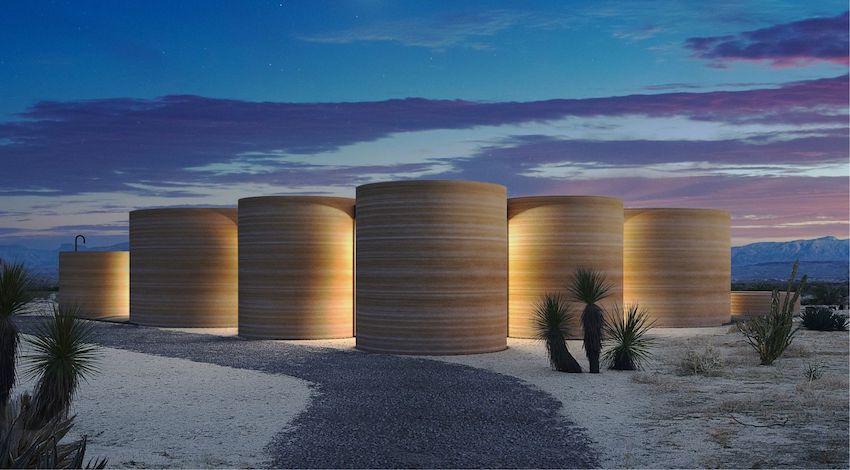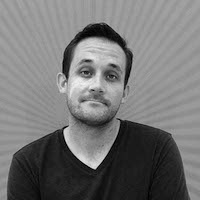
Bjarke Ingels of Bjarke Ingels Group (BIG) and Texas hotelier Liz Lambert
3D printing technology and robotic construction holds promise for affordable housing projects
Sponsored by Vitro Architectural Glass | Presented by Bjarke Ingels and Liz Lambert
Danish architect Bjarke Ingels of Bjarke Ingels Group and Texas hotelier Liz Lambert discuss their joint project in Marfa, Texas, which expands Lambert’s innovative campground hotel, El Cosmico. They describe their work with construction technology company, ICON, and their innovative approach to hospitality in the desert that uses the landscape and its materials for inspiration. Ingles and Lambert discuss how 3D printing technology and robotic construction holds promise for affordable housing projects, artisanal architecture, and even building on the moon.

Photo courtesy of Bjarke Ingels Group
The new 62-acre community will feature large-scale 3D-printed structures including domes, arches, vaults and parabolic forms, enhancing the guest experience with a pool, spa, and shared communal facilities.
 |
Aaron Prinz is the host of the Design:ED Podcast and holds a Masters of Architecture degree from the University of Texas at Austin. He was born and raised in the rural Northern California town of Red Bluff, just two hours south of the Oregon border. After one year of college, Prinz relocated to San Francisco to pursue a career in stand-up comedy. At age 26, he began studying architecture at Portland State University while interning at Studio Petretti Architecture led by Amanda Petretti. His professional contributions while at Studio Petretti were focused on a portion of the new Multnomah County Courthouse which is a prominent addition to the Portland skyline. He currently resides in Austin, Texas with his wife Roxanne where he continues to work as a designer. |
Vitro Architectural Glass (formerly PPG Glass), North America’s largest glass producer, is dedicated to glass innovation and fueled by the same people, plants and products that made PPG Glass one of the industry’s most respected and reliable commercial glass manufacturers.
Originally published in Architectural Record
Originally published in October 2023
LEARNING OBJECTIVES
- Describe the elements of El Cosmico’s original design and how Bjarke Ingels and Liz Lambert plan to evolve it.
- Explain the concept of El Cosmic in terms of how it uses materials and landscape to reshape the idea of luxury camping.
- List the ways 3D printing and robotic construction can support affordable housing projects and also maintain an artisan style, according to Ingels and Lambert.
- Discuss the vision Lambert and Ingels have for how design and construction would be implemented on the moon or other planet.











